If you have a parent or other family member with a health condition like high cholesterol or cancer you’ve probably considered you may have a genetic predisposition for those conditions. Though this may be true, it doesn’t mean you can’t influence your risk. It’s no secret that diet and exercise can have positive influences on your health and risk for disease, but now we know it is even affecting how your DNA is expressed.
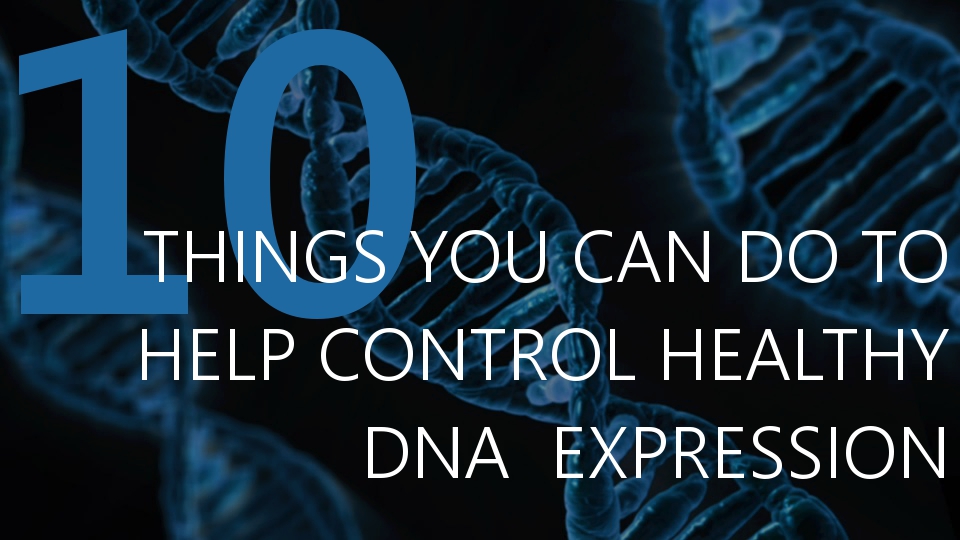
A little DNA refresher…
You inherit your DNA from each of your parents. Your DNA carries the instructions that determine your growth and development, and produces proteins that are necessary for everyday functioning. Genes are basic units of DNA that interact with each other and the environment.
Epigenetics & Why Your DNA Isn’t Your Destiny
Your DNA isn’t necessarily your fate when it comes to health and disease. The way our DNA is expressed depends on certain modifications that determine if the gene is turned on or off. These are called epigenetic modifications which occur “on top of” the DNA, not to the DNA itself. Diet, lifestyle, and environmental factors can influence genetic expression through epigenetic changes.
Not only do these changes in your DNA expression affect your health, it can also be passed down to your children. That’s right! Your healthy habits matter to future generations because they not only inherit your DNA, but also whether genes are turned on or off! In fact, this phenomenon known as ‘genomic imprinting,’ may be why some families have high incidences of breast cancer without having the well-known breast cancer-associated genes BRCA1 and BRCA2. (1)
One of the primary ways these epigenetic modifications take place is by a process called methylation. People with high breast cancer risk (BRCA1-associated cancers) have been shown to have lower levels of methylation than those with lower risk “sporadic” cancers. (2) Methylation and histone acetylation are 2 of the primary ways epigenetic modifications occur.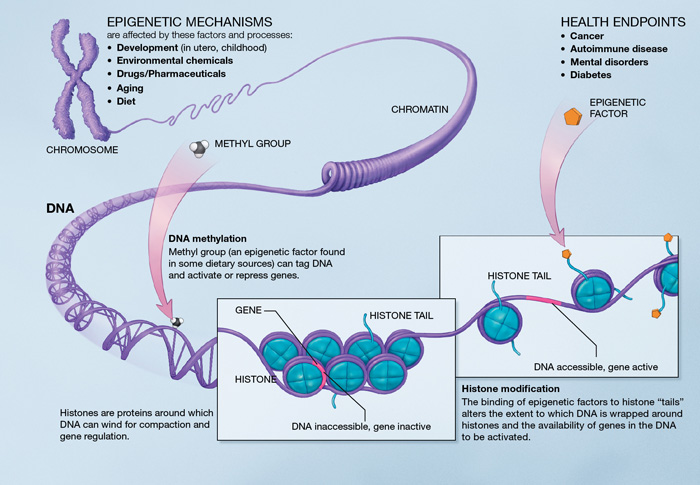
Here are 10 things that have been associated with positively influencing disease risk, at least in part through gene expression:
1. Exercise – Exercise can play an important role in risk reduction for a variety of cancers, possibly in part through epigenetic mechanisms. Increased physical activity was associated with an average of 25-30% risk reduction in breast cancer, with the impact depending on several factors including hormone-receptor status. A dose-response, meaning increased effect with increased exercise, was seen in 28 of 33 studies. (3) (4)
Another reason to get your body moving is that a sedentary lifestyle has been shown to increase your risk for a variety of cancers including colon and endometrial cancers (but not necessarily breast cancer). (5) Benefits of exercise after a breast cancer diagnosis also include less fatigue, improved physical fitness, and cognitive function. (6)
2. Lose Fat – Though the impact of body weight on breast cancer risk is complex, studies do support a reduction in risk with reduction in fat (adiposity). (7) (8) BMI, waist circumference, and waist-to-hip ratio are able to provide reasonable estimations of adiposity, but a more accurate measure can be done through body composition analysis.
The epigenetic link here is that adiposity in a previous generation or in pregnancy can affect adiposity in the offspring, (9) and it is theorized that this increased adiposity is also related to the increased risk of breast cancer. (1) It should also be noted that undernutrition during pregnancy can also have the same affect—increased adiposity and potentially breast cancer risk in offspring. (10) The most successful fat loss programs are those that are sustainable lifestyle changes rather than yo-yo dieting, but impacts of diet on cancer risk go beyond body fat.
Nutrigenomics is a fascinating and important field of study on the effects of nutrition on genetic expression. From a 2012 article in Nutrition Research Reviews: “nutrition makes an impact on the genome to such a degree that it is paramount to understand this interaction in detail to prevent health disorders and help the treatment of diseases.” In fact, “diets and foods can have an effect on breast cancer risk that is shown many years after their consumption, and even in the offspring.”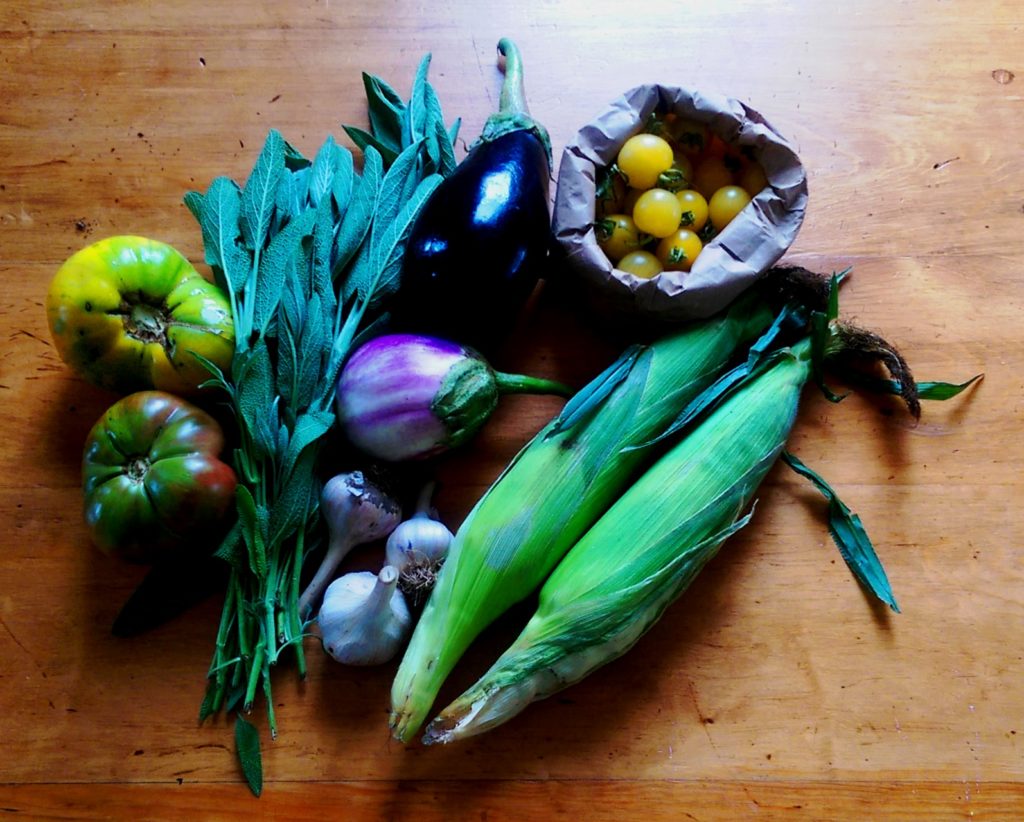
3. Get Your Fruits & Veggies – Studies are limited on which specific nutrients in breast cancer in particular, but some over-arching themes on improving genetic expression through nutrition include a diet high in fruits, vegetables, whole grains, and unprocessed animal protein like fish. (11) (12)
4. Reduce Sugar Consumption – In populations that have a higher risk for insulin resistance (and therefore high blood sugar), high intake of refined carbohydrates like sugar is associated with increased breast cancer risk. (13
5. Incorporate super foods by consuming a rainbow of colors daily – Some phytonutrients have been shown to have a protective effect on breast cancer risk. Different phytonutrients are often responsible for the different colors in fruits and vegetables. Certain carotenoids for example are found in higher levels in orange fruits and vegetables and may protect DNA from damage. (14) Lycopene, most known for being found in tomatoes, likely plays a role in positively affecting epigenetic modifications by activating a tumor suppressor gene, (15) including inhibiting breast, prostate, and lung tumors in animal models. (16)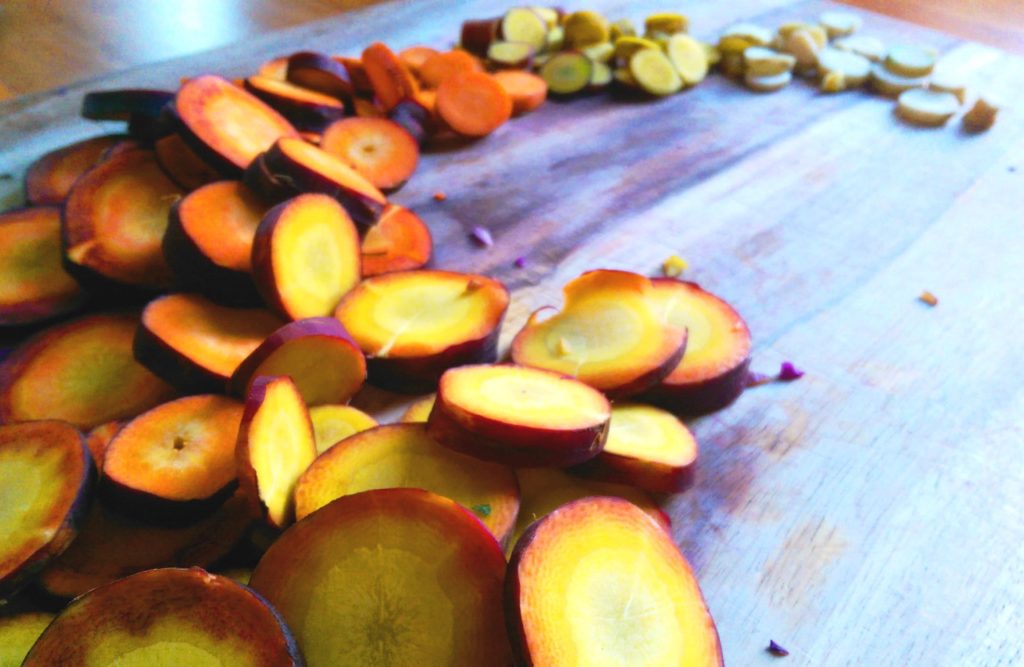
Polyphenols, found in a broad range of plants, have been shown to reverse aberrant epigenetic changes associated with some cancers. (17) Included in this group are quercetin (found in higher levels in citrus fruits and buckwheat), ellagitannins (found in many berries as well as walnuts and almonds), and apigenin (found in chamomile, grapefruit, onions, and a variety of culinary herbs). (16)
6. Eat Cruciferous Vegetables – Cruciferous vegetables include broccoli, cauliflower, horseradish, brussel sprouts, radishes and more. These plants have many benefits including 2 related compounds: I3C and DIM. These two compounds have multiple mechanisms that act against cancer including causing cell cycle arrest in breast cancer cells regardless of estrogen-dependence. (16) These fascinating studies are mostly in vitro or in mice.
Another compound of interest in cruciferous vegetables is isothiocyanate which has shown activity in halting cell cycles in multiple cancer types as well as affecting an epigenetic process called histone acetylation. Some cancer types where this may be beneficial include acute leukemia and hepatocellular carcinoma. (16)
7. Drink Green Tea – Besides the benefits of polyphenols mentioned above, one particular polyphenol known as EGCG found in green tea has been shown to re-activate suppressed genes in cancer cell lines including breast, prostate, colon, and esophageal cancers. (18) Another mechanisms green tea polyphenols modifies gene expression is by altering the expression of microRNAs (small bits of non-coding RNA that inhibit gene expression) in several cancers including liver and breast cancer. (16)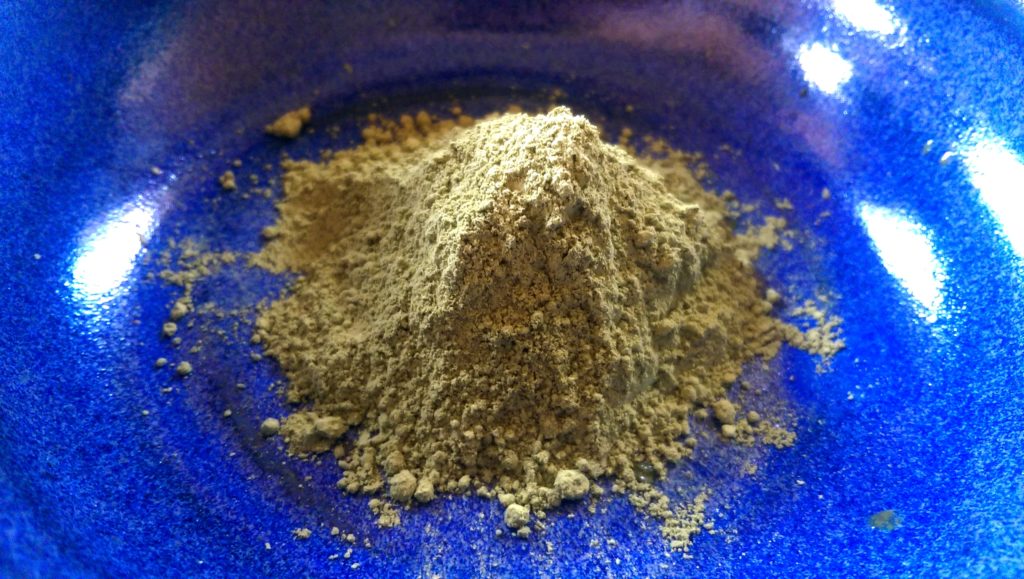
8. Use Curcumin in Your Cooking – Curcumin is the main active ingredient in the spice turmeric and it is becoming more and more well-known for its anti-inflammatory properties. It has also showed promise with its effects on cancer, some of which are at the genetic level. This includes the reactivation of genes suppressed in prostate cancer, (19) beneficial changes in DNA expression in breast and cervical cancer cells, reduction in the size of medulloblastoma tumors in mice and improved DNA expression in humans with the same cancer type. (16)
9. Stop Smoking – Yes, of course you know cigarette smoking is associated with cancer, but did you know this is in part due to epigenetics? Cigarette smoking silences several tumor suppressor genes, (20) essentially turning off a line of protection in the steps toward cancer.
10. Reduce Stress & Meditate – Stress from childhood through adulthood can negatively impact our DNA. The positive spin on this is that positive social experiences in childhood can promote protective epigenetic changes, (21) and even if your childhood was lacking in positivity or you are under a lot of stress in your life today, you can still influence how your DNA is expressed.
Kirtan Kriya Meditation done 12 minutes daily for 8 weeks was shown to cause differential expression of 68 genes. This study and others also suggest that meditation may reverse inflammatory changes that are seen in acute stress situations and decrease the expression of multiple pro-inflammatory genes. (22) (23)
There are a lot of different ways to aid your adaptation to stress beyond meditation including yoga, breathing exercises, biofeedback, and there are a variety of apps that an help guide you in the process.
Other factors that appear to raise breast cancer risk include persistently elevated cholesterol, which may be due to hormonal or epigenetic changes, (24) obesity in post-menopausal women, and alcohol consumption. (1)
If you are interested in learning more about how you can change the expression of some of your genes through epigenetics or how certain genetic variations called SNPs (pronounced “snips”) influence gene expression, check out Dr. Jennifer Stagg’s brand new book, Unzip Your Genes officially released November 15th!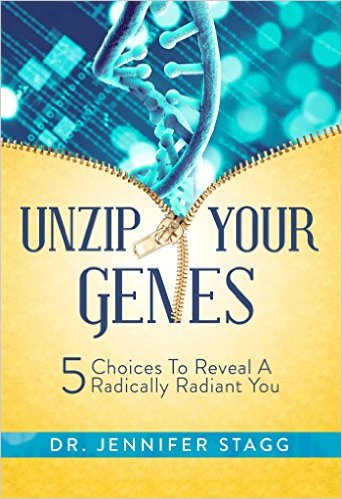
For more detail about how epigenetics works with some fascinating examples both in medicine and in animals, The Epigenetics Revolution by Nessa Carey published in 2012 is well worth the time.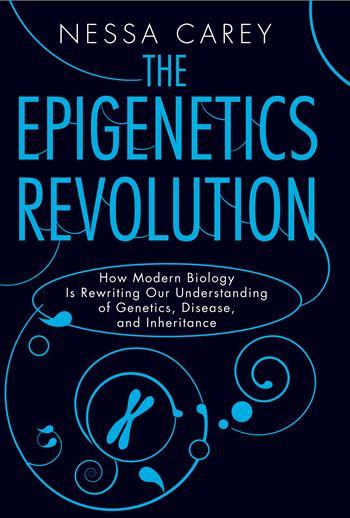
Disclaimer: As always, the information above is not intended to diagnose, treat, or cure any condition. These statements have not been evaluated by the Food and Drug Administration. If you have health concerns please see a medical professional.
Works Cited
- Redefining the impact of nutrition on breast cancer incidence: is epigenetics involved? Teegarden, Dorothy, Romieu, Isabelle and Lelièvre, Sophie. 1, s.l. : Nutr Res Rev, 2012, Vol. 25.
- Methylation is less abundant in BRCA1-associated compared with sporadic breast cancer. Suijkerbuijk, KP, et al., et al. 11, s.l. : Ann Oncol, 2008, Vol. 19.
- Physical activity and breast cancer risk: impact of timing, type and dose of activity and population subgroup effects. Friedenreich, CM and Cust, AE. 8, s.l. : Br J Sports Med, 2008, Vol. 42, pp. 636-47.
- Vigorous activity helps protect women from breast cancer. 33, s.l. : Nurs Stand, 2007, Vol. 21, p. 15.
- Television viewing and time spent sedentary in relation to cancer risk: a meta-analysis. Schmid, Daniela and Leitzmann, Michael. 7, s.l. : JNCI J Natl Cancer Inst, 2014, Vol. 106.
- Exercise for women receiving adjuvant therapy for breast cancer. Furmaniak, AC, Menig, M and Markes, MH. s.l. : Cochrane Database Syst Rev, 2016, Vol. 9.
- Association of gain and loss of weight before and after menopause with risk of postmenopausal breast cancer in the Iowa women’s health study. Harvie, M, et al., et al. 3, s.l. : Cancer Epidemiol Biomarkers Prev, 2005, Vol. 14, pp. 656-61.
- Adult weight change and risk of postmenopausal breast cancer. Eliassen, AH, et al., et al. 2, s.l. : JAMA, 2006, Vol. 296, pp. 193-201.
- Developmental and epigenetic pathways to obesity: an evolutionary-developmental perspective. Gluckman, PD and Hanson, MA. 7, s.l. : Int J Obes (Lond), 2008, Vol. 32, pp. S62-71.
- Fetal origins of hyperphagia, obesity, and hypertension and postnatal amplification by hypercaloric nutrition. Vickers, MH, et al., et al. 1, s.l. : Am J Physiol Endocrinol Metab, 2000, Vol. 279, pp. E83-7.
- Empirically derived dietary patterns and risk of postmenopausal breast cancer in a large prospective cohort study. Velie, EM, et al., et al. 6, s.l. : Am J Clin Nutr, 2005, Vol. 82, pp. 1308-19.
- Dietary antioxidants and human cancer. Borek, C. 4, s.l. : Integr Cancer Ther, 2004, Vol. 3, pp. 333-41.
- Physical activity and overweight/obesity in adult Mexican population: the MEsican National Health and Nutrition Survey 2006. Gómez, LM, et al., et al. 4, s.l. : Salud Publica Mex, 2009, Vol. 51, pp. S621-9.
- Serum carotenoids and breast cancer. Toniolo, P, et al., et al. 12, s.l. : Am J Epidemiol, 2001, Vol. 153, pp. 1142-7.
- Modulation of gene methylatino by genistein or lycopene in breast cancer cells. King-Batoon, A, leszczynska, JM and Klein, CB. 1, s.l. : Environ Mol Mutagen, 2008, Vol. 49, pp. 36-45.
- Plant phytochemicals as epigenetic modulators: role in cancer chemoprevention. Thakur, VS, et al., et al. 1, s.l. : AAPS J, 2014, Vol. 16, pp. 151-163.
- Frequent gene hypermethylation in laryngeal cancer cell lines and the resistance to demethylation induction by plant polyphenols. Paluszczak, J, et al., et al. 1, s.l. : Toxicol In Vitro, 2011, Vol. 25, pp. 213-21.
- Tea polylhenol (-)-epigallocatechin-3-gallate inhibits DNA methyltransferase and reactivates methylation-silenced genes in cancer cell lines. Fang, MZ, et al., et al. 22, s.l. : Cancer Res, 2003, Vol. 63, pp. 7563-70.
- Epigenetic CpG demethylation of the promoter and reactivation of the expression of Neurog1 by curcumin in prostate LNCaP cells. Shu, L, et al., et al. 4, s.l. : AAPS J, 2011, Vol. 13, pp. 606-14.
- Epigenomic alterations and gene expression profiles in respiratory epithelia exposed to cigarette smoke condensate. Liu, F, et al., et al. 25, s.l. : Oncogene, 2010, Vol. 29, pp. 3650-64.
- Epigenetic programming by maternal behavior. Weaver, IC, et al., et al. 8, s.l. : Nat Neurosci, 2004, Vol. 7, pp. 847-54.
- Yogic meditation reverses NF-kB and IRF-related transcriptome dynamics in leukocytes of family dementia caregivers in a randomized controlled trial. Black, D. 3, s.l. : Psychoneuroendocrinology, 2013, Vol. 38, pp. 348-55.
- Rapid changes in histone dezcetylases and inflammatory gene expressino in expert meditators. Kaliman, P, et al., et al. s.l. : Psychoneuroendocrinology, 2014, Vol. 40, pp. 96-107.
- Lowry, Fran. High Cholesterol May Boost Breast Cancer Risk. Medscape. [Online] 2014. http://www.medscape.com/viewarticle/828084?pa=bBh1afGn%2FGmC3oKhYjMvcJsjQ1F1UoLi2mPYfVCyO6b5DjHM9XiJywyIOvdbiM3X56MI7dGTgNawPfsOtJla9Q%3D%3D.
- Relaxation Response Induces Temporal Transcriptome Changes in Energy Metabolism, Insulin Secretion, and Inflammatory Pathways. Bhasin, MK. 5, s.l. : PLoS One, 2013, Vol. 8, p. e62817.
